ProductsDec 28 2018
We established the Textile Material Business Department in 2013 with the goal of redefining the potential of textiles. While manufacturing secondary materials for fashion apparel had been our mainstay business at SHINDO, we extended the frontiers of our textile manufacturing to include industrial materials (fiber materials). We naturally started with a bedrock of skills accumulated through years of working with textiles in our fashion business. However, to develop new materials fit for a variety of industrial uses, we recognized right away that additional technical knowledge needed to be gathered from outside the textile field. In this section, we would like to share the story of what inspired the establishment of the Textile Material Business Department, as well as briefly discuss the development process of the new materials that SHINDO aims to create.
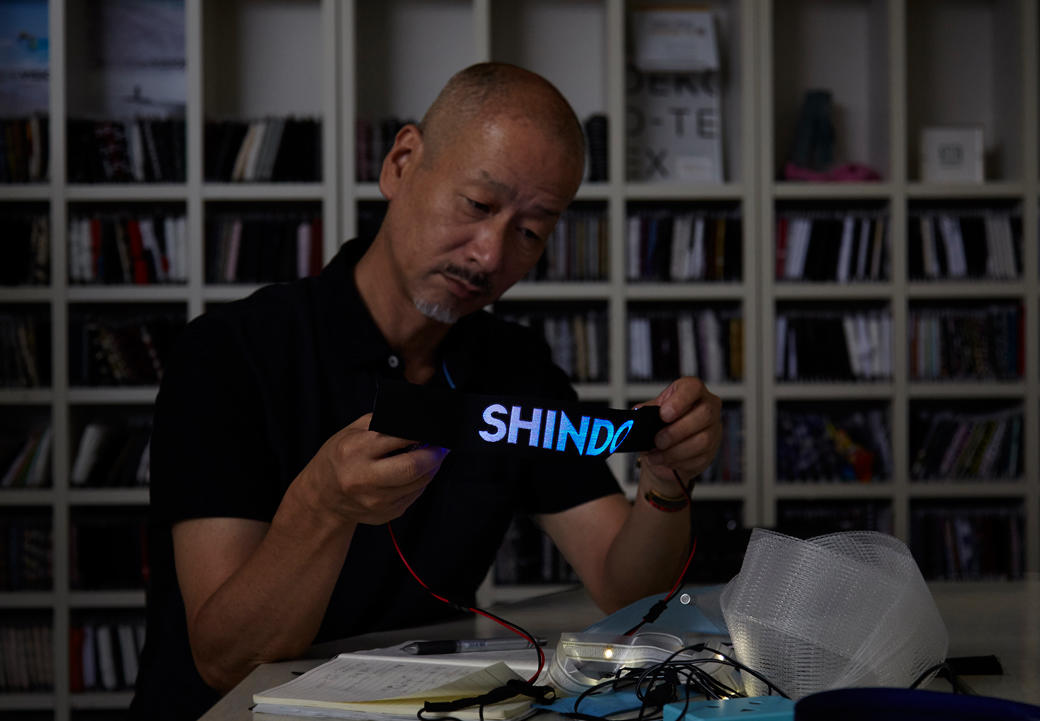
SHINDO's decision to start developing new materials was inspired by an encounter with a strip of glowing ribbon. The ribbon was a prototype used in an experiment at the Industrial Technology Center of Fukui Prefecture, a long-time supporter and partner of the region's textile industry. It was a ribbon involving an LED substrate and had been used in a famous designer's wedding dress that had been presented at a recent fashion show. The novelty of this piece at the time still stands out in our memory. The LED ribbon, however, was not without a host of issues to be solved in terms of safety and compatibility with fabric. For example, it was possible to receive a mild electric shock when touching it, and it had a tendency to smoke when the conducting wires came into contact with each other.
From here, we set out to commercialize a glowing ribbon that could be safely used as an apparel secondary material in collaboration with the e-Textile Working Group, a group dedicated to studying clothing and textiles combining fiber and electricity. We designed and developed an LED substrate for about six months, and produced ribbon woven with soldering-proof glass fiber and electro-conductive yarn. Next, we successfully integrated the LED substrate into the ribbon in a stable manner by covering the ribbon with an insulating film with the optimal thickness and flexibility. The result was SHINDO's cutting-edge glowing ribbon that is light, flexible, water-resistant and, above all, safe to use. The product has been used successfully for stage costumes, costumes used for shooting TV commercials, apparel for safe night running, and various other purposes. The ribbon still has potential for further application.
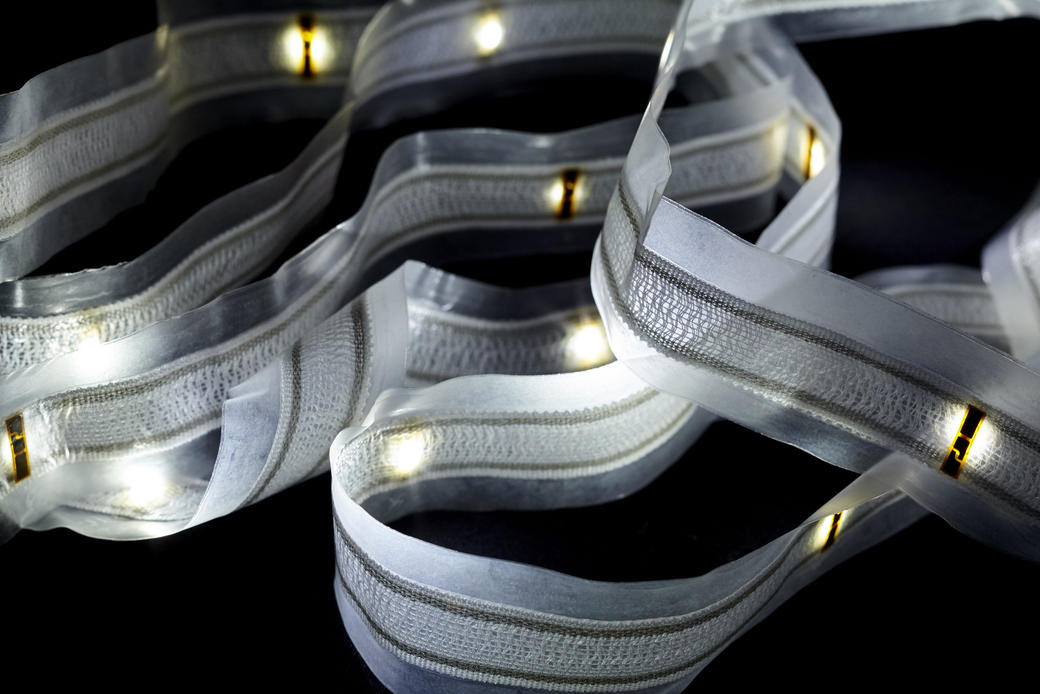
We produce 40 to 50 prototypes a year to materialize ideas. This number is then whittled down as the prototypes are put through various experiments. These new materials are the fruit of our expertise in ribbons and textiles combined with outside expertise provided by specialists we come into contact with at forums such as the aforementioned e-Textile Working Group. In this way, we are constantly developing and commercializing new wearable products and smart textiles that incorporate state-of-the-art technology based on LED, optical fiber, and Micro-electronic Mechanical Systems (MEMS) sensing technology.
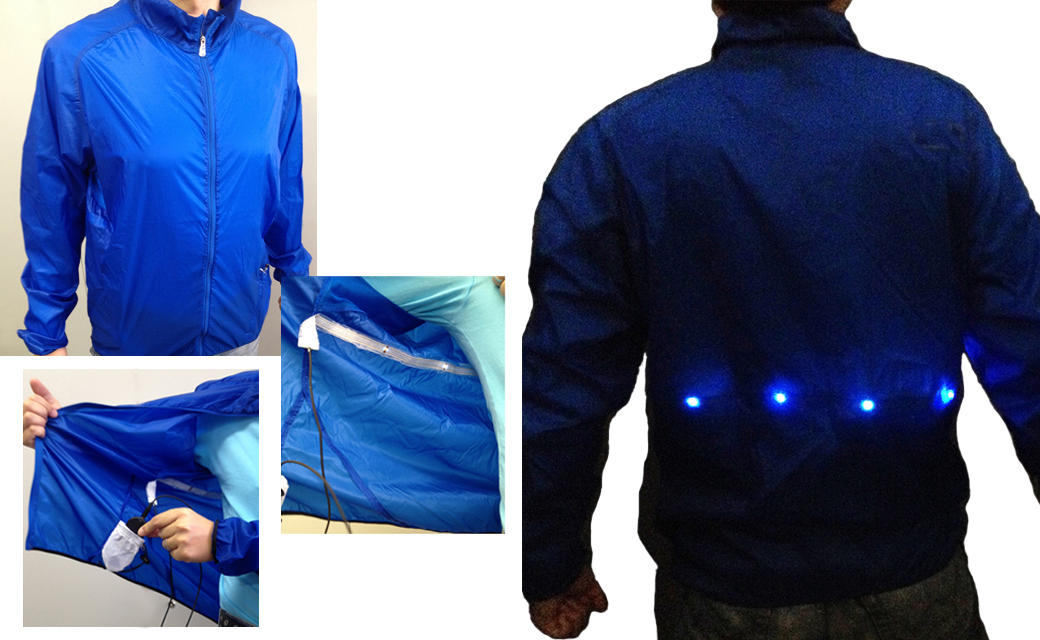
The development of new materials is no easy task. Our Product Development Division, however, remains undaunted in the face of this truism, stepping up to achieve that goal and move forward constantly without hesitation. We would also be remiss in failing to mention that new product development is regularly informed by feedback from other manufacturers. We present prototypes for new materials and newly developed technology at exhibitions, as well as publish our findings in industrial-specific papers, and it is not uncommon to receive interest from manufacturers wishing to fit our concepts to their own applications. Thus, we are constantly welcoming outside perspectives as they may allow us to expand the original idea's potential application.
What we do is not easy, even with our ability to deal with custom prototyping and small-lot commercialization, or our integrated system from development through manufacturing. In spite of this, it is our mission to continue to pursue the new potential of textiles as a pioneer ribbon manufacturer.
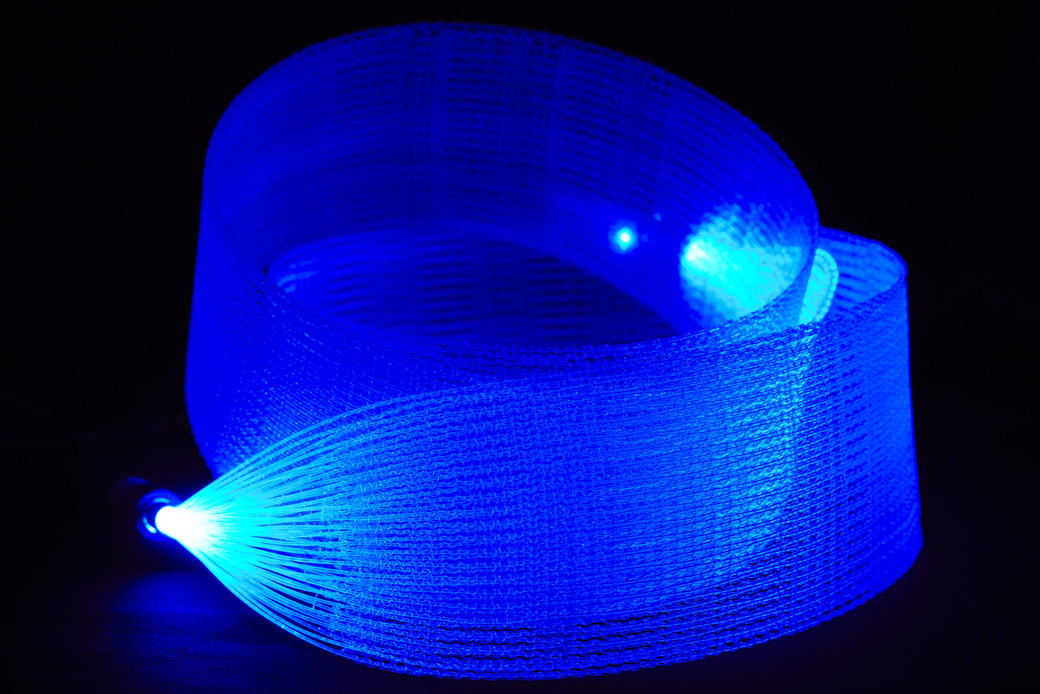
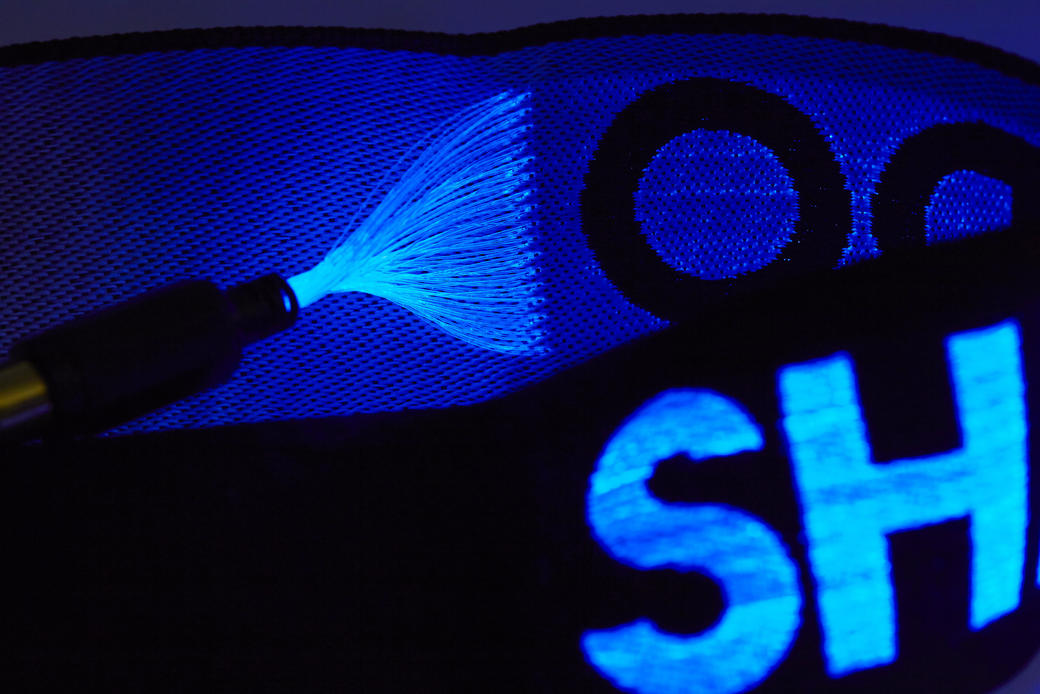
Prototyping is essential for new material development. SHINDO enjoys the advantageous position of being able to offer a quick turnaround from verification of specifications for prospective, narrow width textile materials to prototype creation, owing to our technological expertise and factories dedicated to knitting, weaving and secondary processing.
An optical fiber manufacturer, which had been manually producing a product used for decorative illumination, once consulted with us hoping to increase their manufacturing efficiency. They had already consulted with numerous other manufacturers, none of whom had been able to meet their desired conditions. We set out to develop the optical fiber at a lower cost and in smaller lots while ensuring specifications equal to the sample provided to us by the client. This sample was made up by 5,000 fiber filaments woven in a one-meter-long piece of fabric. Following repeated trial and error, we successfully commercialized an optical fiber comprising 140 filaments - roughly 1/35 of the original. The key to success in this project was to use our warp knitting technology, which is highly acclaimed for its flexibility by clients in the apparel and sportswear fields. Specifically, we utilized our expertise from the Power Mesh Knit in this project. The resulting new optical fiber can emit light when needed, even if it has a complex shape. Accordingly, it has many different applications owing to its flexible properties. For example, it allows for door-activated illumination of walking paths, illumination of the inside of a bag upon opening, or even illumination of digital signage. This new product also has potential applications for wearable devices that are expected to evolve. Optical Fiber Mesh Knit, as well as the patent-pending Optical Fiber Jacquard, were thus developed as a result of the amalgamation of accumulated knowledge and technical capacities, and this business consultation illustrates the myriad avenues through which new materials can be conceived.
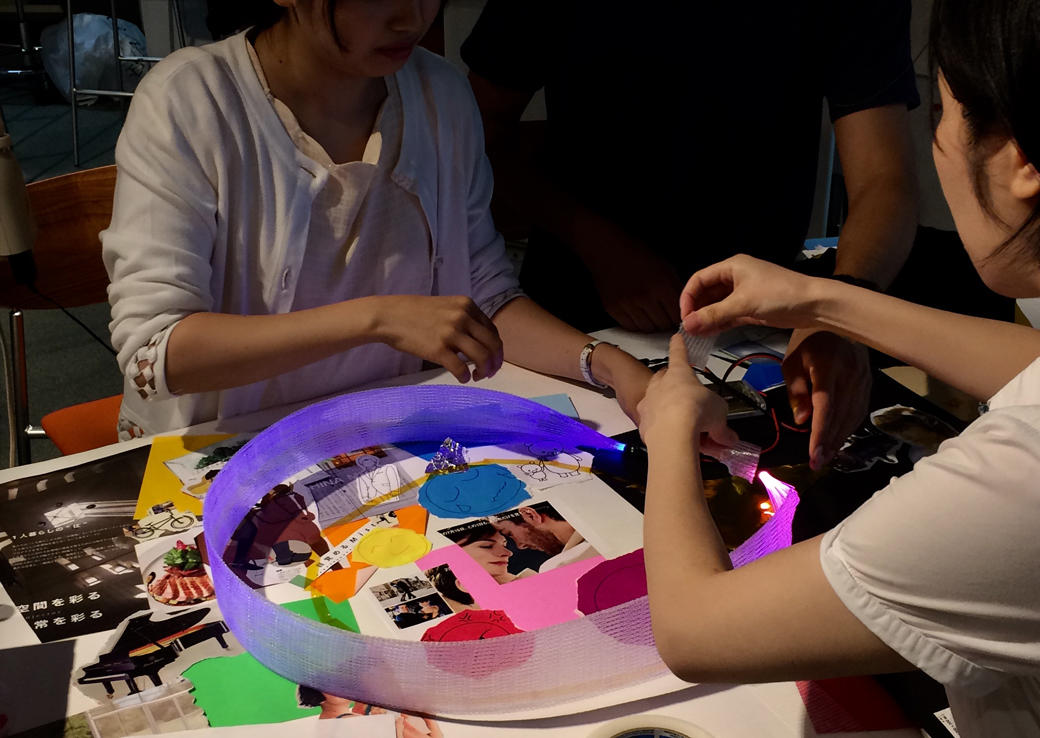
Together with college students, we recently participated in a hackathon for developing optical-fiber-based products themed on future wearable devices. We discussed the wearable devices that might materialize in the next ten years and exchanged ideas. The team members shared useful ideas and unique conceptions that could help improve quality of life, such as a device that allows the wearer to communicate his or her feelings without verbalizing them. Another notable idea was a device that could notify the wearer of heat stroke and other changes in their physical condition, based on heart rate and body temperature, even before he or she is aware of such changes. The participants invigorated us with their vast creativity and reminded us that to materialize new ideas, neither textiles nor electro-technology, or even a combination of the two, are, alone, not enough. To bring new, world-enhancing things into existence, it is imperative that we continue to connect with people who have different experiences and expertise, and we are certainly excited to do just that in the future.
We would like to contribute to a safe, comfortable and convenient life for all by creating novel, high-quality products through our collaborations with business partners from other industries. Someday, in five, ten, or twenty years, traditional techniques including knitting and weaving and today's advanced technology will be fused, and the resulting products will be commercialized as the future standard. SHINDO is making constant progress while imagining such a future.
TOPCategory ArchiveProductsThe Quest for New Unprecedented Materials